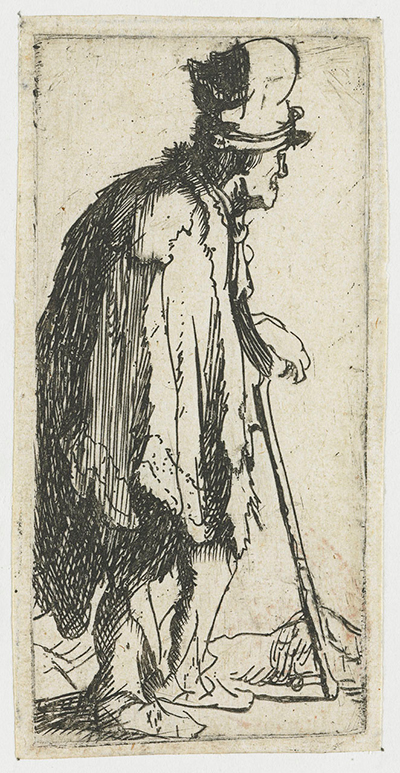This etching was completed around 1629 by Rembrandt van Rijn and many prints were produced from it and sold to various collectors around Europe soon afterwards.
We do know that the artist would produce series of prints, before then tweaking the etching to create further variants. It is believed that the item found here was one of a dozen, although it is not known which version of series it came from. Sometimes the artist would write on the back of each print as to how many series he had already produced so that then we could compare the alterations over time to see how the artwork evolved over time. One of these prints can be found in the British Museum in London, and another in The Morgan Library & Museum in New York. Many art institutions such as these have snapped up these various prints because of their connection to such a famous artist as well as their relatively lower valuations. These types of small items can also be used in a versatile manner within exhibitions, such as to illustrate parts of an artist's career but without having to loan specific paintings for that purpose. Galleries will likely be far more willing to loan out lower value items such as these, with reduced insurance premiums also helping.
If we look at the composition itself within Beggar with a Crippled Hand Leaning on a Stick we find another example of the artist's interest in the local poor. Few have given so much time to them as Rembrandt, perhaps only Bruegel. Rembrandt himself even depicted himself in this manner in a self portrait to better understand the mentality of these stricken people. Here the old man sports a large hat, with heavy overcoat and unflattering shoes which look beaten and worn. He leans on his stick as the cold continues to impact his own health. The future looks bleak, but on this gentleman goes, unaware of other people's relative success and simply existing as best he can.
You will find many more examples of the poor within Rembrandt's portraits, with his interest in their clothing being particularly noticeable. He would ultimately struggle financially himself and so perhaps understood how precarious one's life could be from one moment to the next. His contributions also help historians to better understand the society of that period, as individuals such as these would often be airbrushed from history by the less compassionate writers and artists that were also around at that time.




